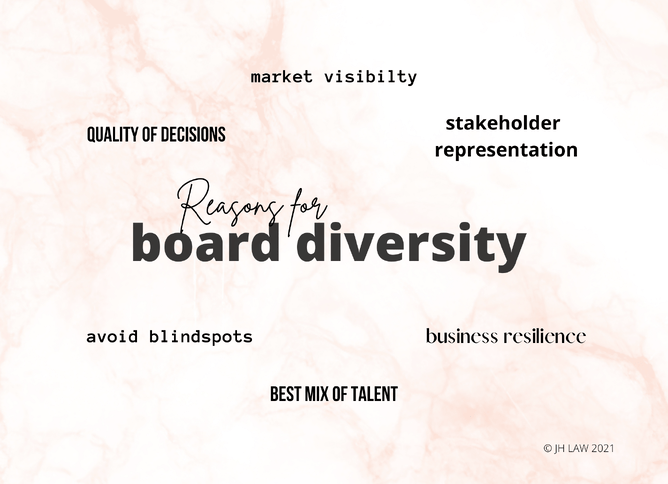As businesses look to more innovative & sustainable ways of doing business, achieving board diversity can be a great starting point where insights can be translated down to management and the wider team.
From success stories around the globe, there would appear to be plenty of ways NZ’s SMEs can achieve diversity (even sole directors). Let’s check it out!
Success stories regarding diversity around the world
NZ
- Vector won the 2019 NZ DiversityWorks Supreme Award. Vector is known to host events celebrating cultural events like Diwali, Chinese New Year, Matariki, Hannukah and Ceilidh. Vector also received an NZ Equal Pay Award to recognise their processes, practices, cultural intent and commitment towards equal pay.
- Xero are also doing lots of things! From getting more women into tech, initiatives to support LGBTQ rights to boosting gender equality across all levels of the business. Xero’s female figures include directors (38%), management (63%) and employees (42%) (June, 2021). They also have a great example of a diversity policy, check it out here.
Overseas
- Novartis has led the world as the most diverse pharmaceutical company for the 3rd year running (Refinitiv Top 25 Most Diverse & Inclusive Companies 2020). Among other things, Novartis has in-house training sessions to educate their team on topics such as unconscious bias, inclusive leadership, disabilities and pay equity.
- BlackRock is the world’s largest investment management corporation who are notably transparent about their employee composition (both gender and ethnicity) supported by their program to hire diverse talent. BlackRock’s 2020 Sustainabilty Report can be found here.
Achieving board diversity through statistics, policy and law.
Public Companies: Under Listing Rule 3.8.1(c), equity issuers listed on the NZX Main Board need to include in their Annual Reports a quantitative gender breakdown of their Directors and Officers (being persons reporting to Directors) and compare those figures to corresponding data from the previous year.
The year 2020 showed that the number of female officers, of all public companies, had increased to the 25% mark. Whilst female directors had risen to a 32% mark and appeared to be on track to meeting a target of 40% by 2026 (NZX, 2020).
Government: This year, the government announced that it achieved its target of 50% women on public sector boards and committees (Beehive, 2021).
The corresponding ethnic compositions were 22.3% Maori, 5.4% Pacific and 4% Asian. These figures when compared to the 2018 Census (NZ population of 16.5% Maori, 15.3% Asian, 9% Pacific) shows that Asian & Pacific groups are under-represented in public sector groups by the figures shown in the most recent Census findings (StatsNZ, 2018).
Private Companies: No mandatory requirements, although private companies may choose to independently govern themselves (i.e. diversity policy) or take inspiration from public or government diversity initiatives.
Constitutions and shareholders agreements often state how many directors can be on the board at any one time and how long they can be a director before the need for re-election/replacement.
Where companies face stakeholder demand for greater board diversity, they may wish to utilise a meeting of their shareholders (usually at least 50%) to agree whether a director should be added or replaced. This legal right depends on what the company’s shareholders agreement or constitution allows.
Overseas: Around the world, we can see increasing efforts to increase diversity in business. Similar to NZ, we see US state mandates for disclosure of board composition at the public company level. With California, going further and even requiring that public boards must have at least one female director (California Senate Bill 826, 2018).
Board diversity can be achieved in several ways, where these decisions and initiatives will no doubt reflect a company’s desire to be best placed and considered well by its stakeholders, both externally (i.e. customers, suppliers) and internally (i.e. employees).
If you have any questions regarding your business’ governance policies or agreements, please reach out to Janey at janey@jhlaw.nz.
Photo credit: Ruth Gilmour Photography


